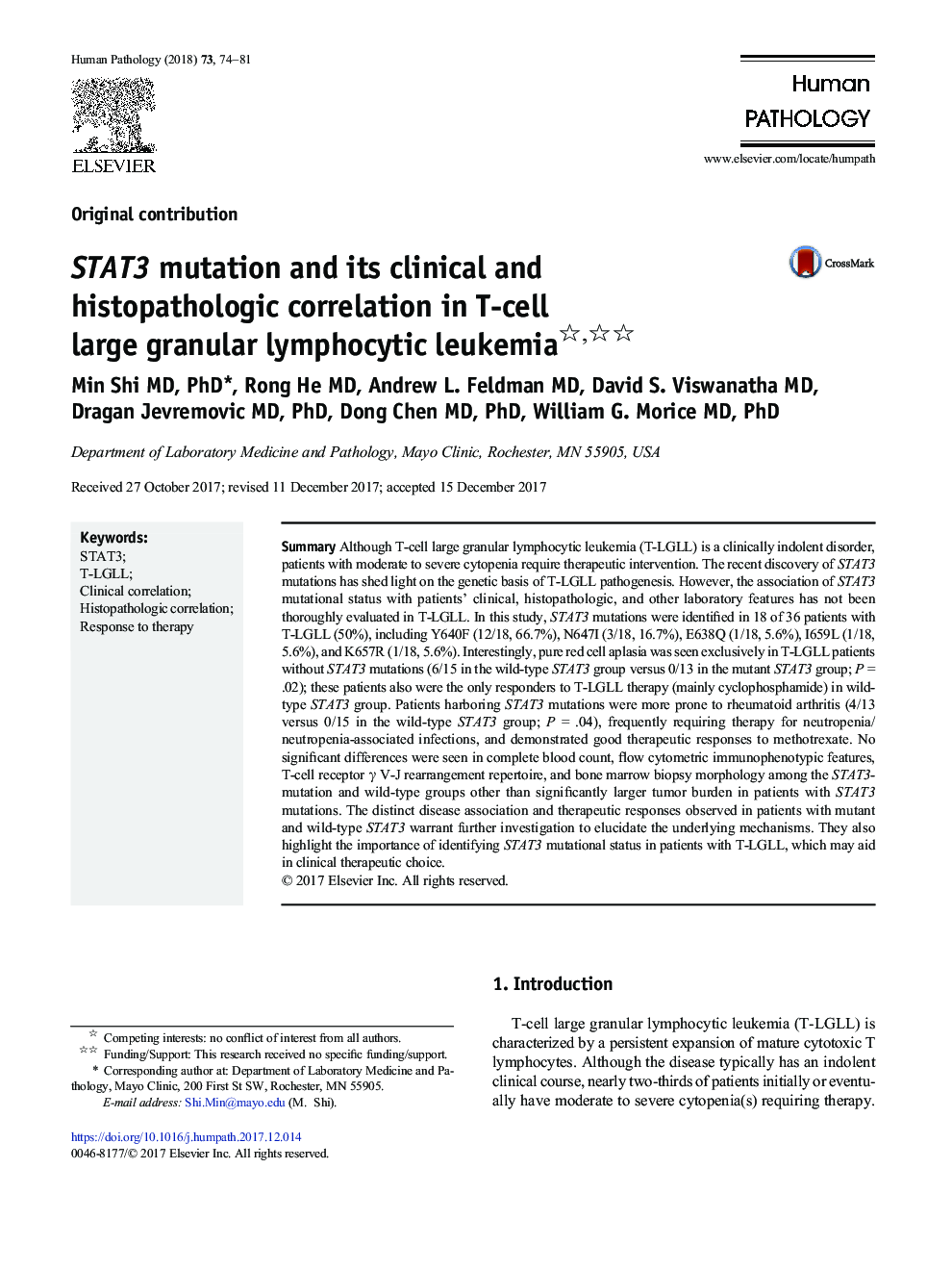| Article ID | Journal | Published Year | Pages | File Type |
|---|---|---|---|---|
| 8807613 | Human Pathology | 2018 | 8 Pages |
Abstract
Although T-cell large granular lymphocytic leukemia (T-LGLL) is a clinically indolent disorder, patients with moderate to severe cytopenia require therapeutic intervention. The recent discovery of STAT3 mutations has shed light on the genetic basis of T-LGLL pathogenesis. However, the association of STAT3 mutational status with patients' clinical, histopathologic, and other laboratory features has not been thoroughly evaluated in T-LGLL. In this study, STAT3 mutations were identified in 18 of 36 patients with T-LGLL (50%), including Y640F (12/18, 66.7%), N647I (3/18, 16.7%), E638Q (1/18, 5.6%), I659L (1/18, 5.6%), and K657R (1/18, 5.6%). Interestingly, pure red cell aplasia was seen exclusively in T-LGLL patients without STAT3 mutations (6/15 in the wild-type STAT3 group versus 0/13 in the mutant STAT3 group; P = .02); these patients also were the only responders to T-LGLL therapy (mainly cyclophosphamide) in wild-type STAT3 group. Patients harboring STAT3 mutations were more prone to rheumatoid arthritis (4/13 versus 0/15 in the wild-type STAT3 group; P = .04), frequently requiring therapy for neutropenia/neutropenia-associated infections, and demonstrated good therapeutic responses to methotrexate. No significant differences were seen in complete blood count, flow cytometric immunophenotypic features, T-cell receptor γ V-J rearrangement repertoire, and bone marrow biopsy morphology among the STAT3-mutation and wild-type groups other than significantly larger tumor burden in patients with STAT3 mutations. The distinct disease association and therapeutic responses observed in patients with mutant and wild-type STAT3 warrant further investigation to elucidate the underlying mechanisms. They also highlight the importance of identifying STAT3 mutational status in patients with T-LGLL, which may aid in clinical therapeutic choice.
Related Topics
Health Sciences
Medicine and Dentistry
Pathology and Medical Technology
Authors
Min MD, PhD, Rong MD, Andrew L. MD, David S. MD, Dragan MD, PhD, Dong MD, PhD, William G. MD, PhD,
